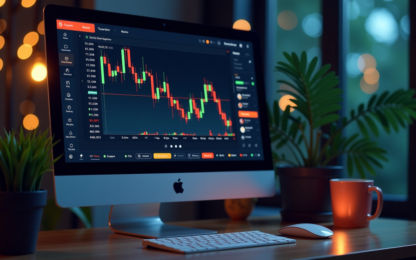
American and German physical silver markets violently diverge in H1 2023
- In H1 2023, German physical silver sales crashed compared to the first six months of 2022.
- Safe haven demand evaporated despite the effects of the 1920s hyperinflation on Germany's public psyche.
- US sales are elevated and on track for another strong year.
Physical precious metals made up the bedrock of ‘value’ in commerce for much of human history.
The oldest silver coins discovered date back to the 6th and 7th century BC, with successful digs across areas as widespread as Greece, Turkey, and India.
To this day, central banks, the world over, maintain gold and silver deposits in guarded vaults.
However, in the modern era, the situation has changed drastically, with precious metals markets now being dominated by paper derivatives.
Interested readers can check out my earlier pieces on paper gold and paper silver.
Physical demand
Copy link to sectionGiven the market power of precious metals contracts, physical sales have received much lesser coverage in the past.
Yet, the last three years have seen something of a renaissance in physical bullion demand.
Since 2020, the world economy has been dominated by the global health pandemic, widespread lockdown policies, geopolitical tumult, runaway inflation and banking crises; which drove safe-haven demand and forced investor preferences to revert (at least, to an extent) to the age-old stores of value – metallic coins and bars.

The Silver Institute found that global demand for physical silver was catapulted 33.8% higher in 2021 to a fresh record of 8,522 tons.
In the following year, this rose 21.5% to reach a new all-time high of 10,356 tons.
Meanwhile, the global physical deficit deepened, which more than offset the surpluses accumulated over the past 11 years, resulting in elevated premiums.

German silver market
Copy link to sectionGermany, being the largest economy in Europe makes up the bulk of the demand for silver bullion of the region.
In terms of physical investment, the country is the third largest consumer after the United States and India.
In response to elevated inflation and other factors mentioned earlier, the German customer increased investment in these products, despite the high premiums.
This ensured a sizeable step up in the European region from 1,708 tons in 2020 to 1,868 tons and 1,837 tons in 2021 and 2022, respectively.

The Silver Institute data shows that as of 2022, Germany accounted for 82.7% of European physical investment demand and made up 14.7% of the global aggregate.
However, Metals Focus, a precious metals research consultancy, noted that customer preferences suddenly made a sharp U-turn with German H1 2023 demand crashing by 57% YoY.
Reasons for the collapse
Copy link to sectionTax treatment
Following the introduction of tax breaks for select categories of silver bullion coins in 2014, nearly 85% of retail sales in the German market have been concentrated in the coins segment.
However, this year, the government rolled back this measure, meaning that all silver, whether in bars or coin are now taxed at 19% levels, which has immensely impacted buying decisions and discouraged new investment.
This is the primary reason that the silver bullion market in Germany collapsed in H1 2023.
Deposit rates
In the global asset market, precious metals have always squared off against interest-bearing products.
Much like other central banks, the ECB tightened monetary policy aggressively since last year, following years of artificially subdued rates.
As a result, German banking interest rates have risen, further dissuading investment in bullion products.
A change in public psychology since the horrors of Weimar hyperinflation?
Despite major concerns around the sustainability of global banks earlier this year and elevated inflation, Metals Focus notes that in Germany,
…a desire for safe haven assets seems to have also moderated, as the public has become accustomed to Russia’s invasion of Ukraine and high inflation.
A Bundesbank survey published in July 2023 appears to confirm that inflation expectations are meaningfully cooling.

This is in sharp contrast to a November 2022 interview in which Dr. Joachim Nagel, President of the Deutsche Bundesbank, was quoted as saying,
…inflation is one of the biggest worries for Germans at the moment. No matter who you talk to. Everyone is worried about their next gas and electricity bills and rising food prices.
However, it should be noted that despite the cheer of disinflation, 12-month ahead figures remain sticky near the 5% mark, while the new tax rules have profoundly dented sales.
It is fascinating to note that at least during H1 2023, a higher tax rate has essentially displaced safe-haven demand for silver bullion, despite Germany’s dark history of hyperinflation in the early 1920s.
Michael K. Salemi, economics professor at the University of North Carolina in Chapel Hill, wrote that Germany faced a staggering monthly inflation rate of 322% in the fifteen months of the hyperinflation.
This left an indelible mark on the public psyche which has been referred to as the “German inflation trauma.”
A 2013 article noted,
Their foremost fear, it transpired, was of helplessness in old age. Second – taking precedence over cancer, or terrorism, or unemployment – came the fear of inflation. This extraordinary finding was published by the respected Allensbach Institute, 90 years after the great German hyperinflation came to an end in the autumn of 1923.
In February 2023, consumer inflation was at 8.7% YoY but moderated to 6.4% YoY in June.
Perhaps, the disinflationary nature of the curve has put the German market at relative ease, contributing to lower safe haven demand.
US silver market
Copy link to sectionIn contrast, North American silver bullion purchases (driven primarily by the USA) have continued to surge reaching all-time highs in 2022.
North American demand this year has remained robust compared to 2022, with a Metals Focus survey showing a 23% YoY rise in H1 2023 sales of silver coins, marking the highest demand since 2015.

In the United States, The Silver Institute data shows that physical investment in silver stood at 1,489 tons in 2019, and exploded higher to 4,169 tons in 2022, a 180% increase.
The US share of global demand grew from 25.6% to 40.3% during the same period.
Although demand was initially weak, American purchases surged following the failures of SVB, Signature, and First Republic Bank.
Thus, the North American markets have continued to view safe haven investments as vital protection against the possibility of higher inflation or a downturn in paper assets.
Outlook
Copy link to sectionH1 2023 has marked an incredible divergence between the US and German physical silver demand, and shall continue to remain significant throughout 2023.
Both US and German sales shall face headwinds amid higher interest rates and rising equity prices.
Metals Focus projects that even with an improvement in demand in the second half, German purchases will likely remain under 2019 full-year levels of 1,177 tons, which was itself 30% below 2022 full-year levels of 1,521 tons.
In other words, German retail investors are potentially less concerned about inflation or financial sector turmoil than they were last year.
However, US sales for 2023 are forecast to more or less match 2022 levels, driven by fresh concerns around the integrity of the banking sector.
More industry news








